Vote selling network exposed by CIN reporters
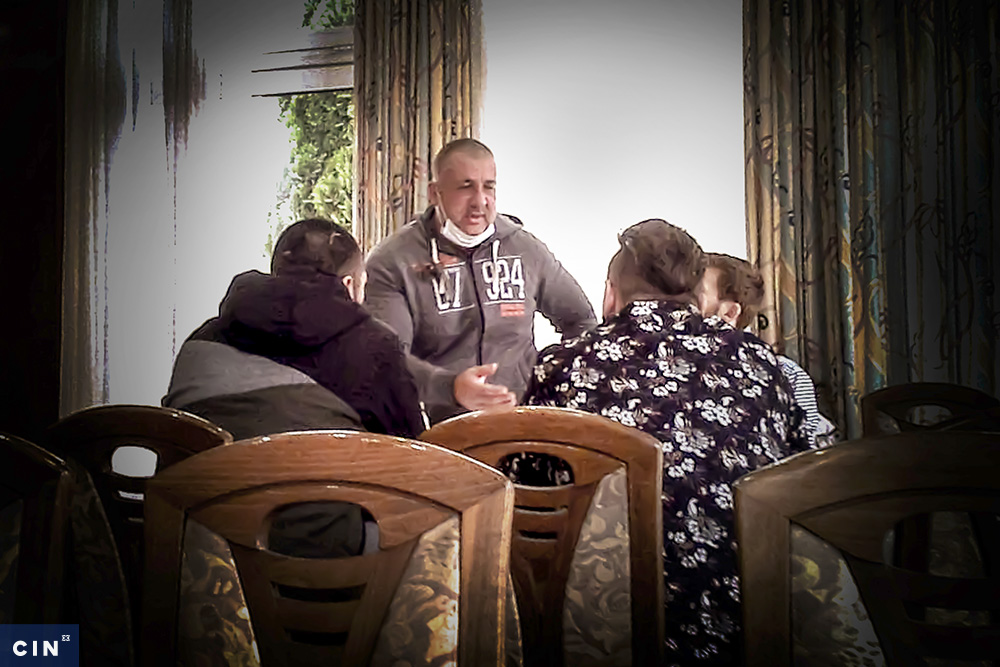
Vote-sellers, Elvir Saletović and Sanel Pengić arranging a vote-buying with candidate Abdulah Iljazović
Photo: CIN
“You – BAM 1,300! I make a copy of the list (…) and tell whom to vote for. On the 13th you’ll get the list. You give 40 (BAM, author’s note). I’ll give it to a lad, you understand, I have two lads.”
This was the vote-buying offer the convicted dealer, Elvir Saletović, made to a young candidate of the Narod i pravda party a few days before the local elections in the Brčko District.
Candidate Abdulah Iljazović played the game, which will bring the vote-selling organizers straight into the police trap.
Posing as party activists, the CIN reporters organized a meeting between Iljazović and vote sellers. Following the exchange of short text messages, they met in a café at a gas station in Brčko. It all felt like a flawless collaboration: Iljazović will give BAM 6,500 and will receive 130 votes in turn, and Saletović and his partner, Sanel Pengić will find voters and charge BAM 50 for each. They will keep part of the money for themselves.
Iljazović decided to report the indecent proposal to CIN, and later to the police and the prosecutor’s office, and thus prevent the vote-selling that would get this candidate a mandate in the Brčko District.
Saletović and Pengić were arrested, and the Brčko District Prosecutor’s Office ordered one-month detention.
Election frauds are not unusual in the Brčko District. Police recently arrested three members of the Brčko District Assembly and five middlemen for conspiring to abuse of votes of at least 280 fellow citizens.
Residents of Brčko villages told CIN reporters that they knew the arrested, and some of them easily believed they would get jobs in public institutions in exchange for their votes. The arrested were mostly deceiving their family members or neighbors.
“People being people, they saw nothing illegal in it,” says Zekerija Mujkanović, the chief prosecutor of the Brčko District Prosecutor’s Office.
Election fate of BAM 50
Two weeks before the 2020 Local elections, Abdulah Iljazović, a candidate for the Brčko District Assembly, received a phone call from an unknown number. He agreed to the proposal and met Pengić and Saletović, both of whom are convicted of drug dealing. Pengić offered his assistance, claiming to have a buddy who sells votes in the elections, but Iljazović declined it.
“In the end, I told him that I would talk to an older colleague of mine (…) to consult with him about what to do.”
Abdulah Iljazović became known to the public when local media revealed that he had been convicted three years ago of possession and sale of narcotic substances. He claims it is now behind him, and all he wants is to take the burden off himself and prove himself to his family, friends and fellow citizens.
Iljazović called CIN reporters and in an agreement with them consented to record the second meeting with Pengić. Pengić showed up with Saletović, who was soon calling all the shots.
Saletović asked Iljazović to make a 1,300 deposit to solidify the deal. He indicated that he’ll bring him a list of people willing to vote for money. Pengić and he explained to Iljazović where they intended to buy the votes:
“As I told you, 100 of these, 20 Serbs and 10 Croats. These are all Muslims, 100 of them. These are from Srpska Varoš, Grčica, Dizdaruša. From the Centre, and you’ll have [votes] from the Centre. Then, you’ll have my [people]. Srpska Varoš, Grčica. This is Bijela,” said Saletović in the meeting.
Shortly after the meeting, Iljazović reported all this to the police.
“I found myself in a situation where I could choose to remain silent, but I do not want to be silent. We have been quiet so far, and this is where we ended up,” said Iljazović explaining his decision.
A few days later, accompanied by a CIN reporter, Iljazović handed Saletović a hundred and thirty 10 BAM banknotes as an advance payment for the purchased votes. Iljazović was expected to pay the remaining BAM 5,200 after the job is done.
According to the plan, each voter was supposed to get 10 BAM. Pengic wrote down the serial numbers of the banknotes in front of the candidate of the Narod i Pravda and CIN reporter. Each voter was supposed to take a photo with their mobile phone of the alled ballot with the received banknote next to it. That photo would have been proof of the job done, and in return, Saletović and Pengić would pay the voters the rest of the money.
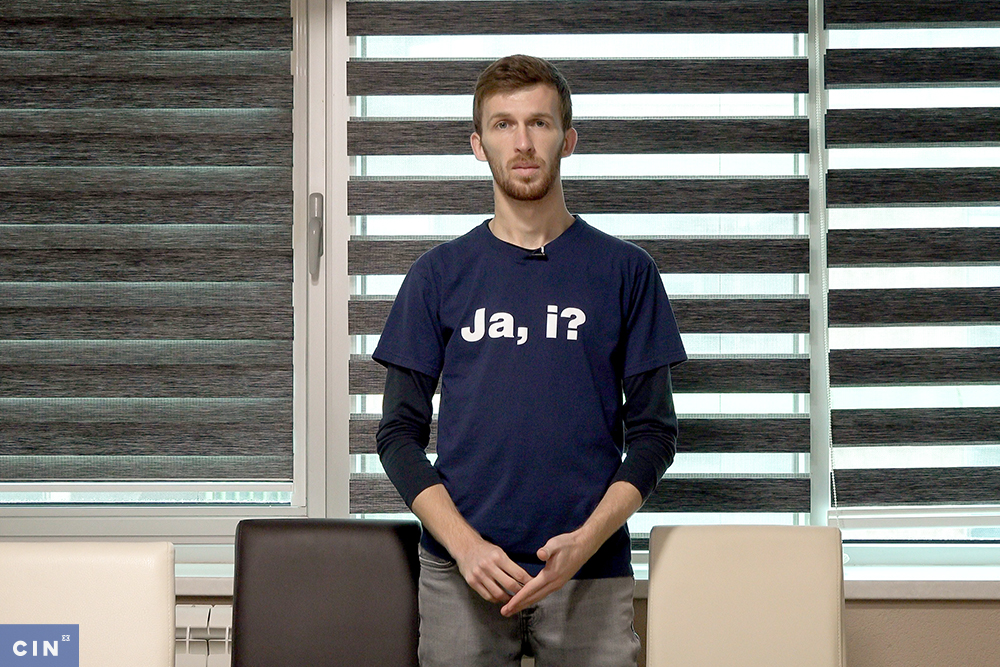
Abdulah Iljazović, candidate of Narod i pravda, together with CIN reporters exposed the election fraud and thus rendered the incarceration of vote-selling organizers
Photo: CIN
All banknotes that Iljazović gave to Saletović and Pengić were marked in a well-planned operation “Voter” by the Brčko Prosecutor’s Office and the police to serve as evidence of election fraud.
On November 13, the day of the handover of the remaining 5,200 BAM, Saletović and Pengić were arrested in their homes. During the search of Saletović, lists with the names of voters and money were found.
A vote as a bail out of jail
Similar election fraud was plotted by other Brčko people as well.
Jasmin Ravkić was sentenced to three months in prison in mid-2020 for illegal logging, but he hoped that Pejo Mendeš, a member of Hrvatska seljačka stranka (HSS) [Croat Peasants’ Party] in the Brčko District Assembly, would have his prison term replaced with community service. This is how he earlier helped his cousin Raif Ravkić.
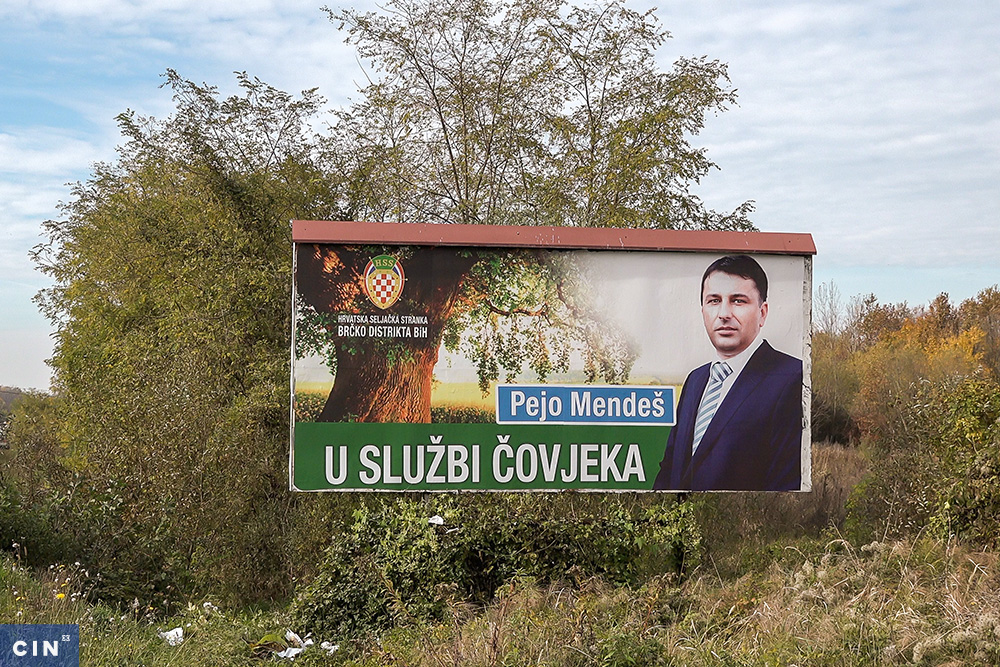
Pejo Mendeš, deputy of Hrvatska seljačka stranka (HSS), is the first among the arrested suspects of the 2020 Local election fraud
Photo: CIN
Jasmin, therefore, agreed with Mendeš to bring him data from ID cards of his neighbors and close family members so that Mendeš could abuse them for the upcoming local elections for outside BiH votes.
According to the plan, the political parties would have such false voters registered for postal voting from Serbia and Croatia to get the ballots. However, the ballots would not be sent to the registered addresses abroad, but instead at the parties’ headquarters.
“I have been there myself with him and Pejo Mandeš when they talked. He told Pejo: ‘Try to help and I’ll collect you 50 ID cards to vote for you.’ Do you understand?”, Raif Ravkić told CIN reporters.
In August this year, Jasmin Ravkić fraudulently obtained the ID details of at least 20 of his neighbors, including his parents. He told them that he needed them because he was collecting signatures for a petition to convert his prison term into community service. Wishing to help, they gladly shared their data not knowing that the data would end up on the voter lists for voting from Croatia and Serbia.
“He said: ‘Would you sign a petition for me so I wouldn’t go to jail for three months? Pejo Mendeš would save me from jail so that I can stay here and be with my children’. So I thought if that’s all that it takes, why not,” explains Sadija Čolić, a neighbor, how Ravkić, whom she has known since he was a child, fooled her, her husband, her son, and mother-in-law.
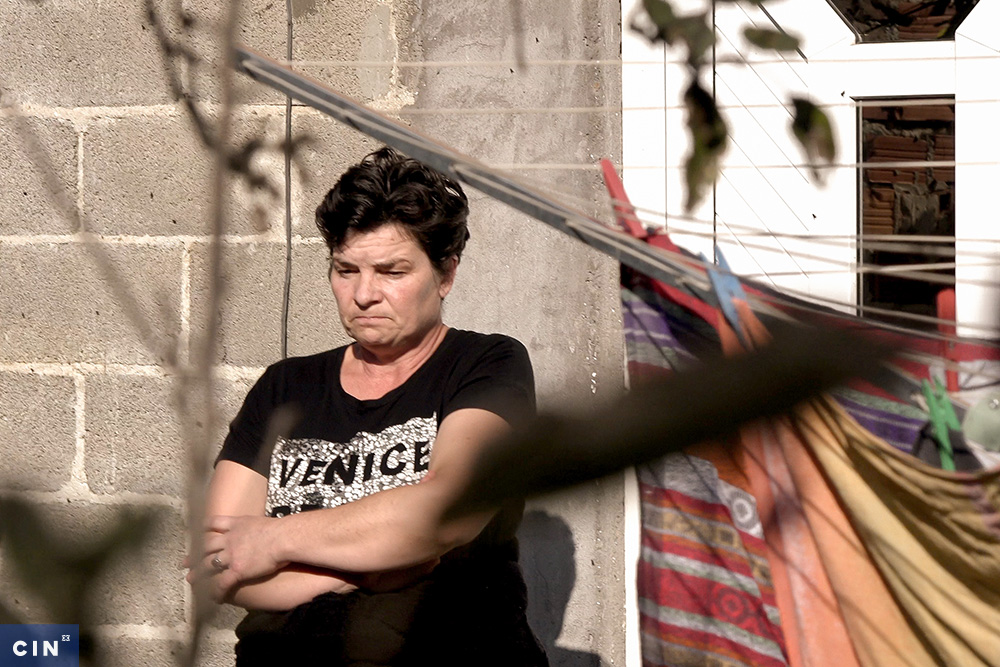
In Rašljani near Brčko, Jasmin Ravkić fraudulently obtained personal data from Sadija Čolić and her family to share it with Pejo Mendeš, who would then misuse it vote absentee
Photo: CIN
Sabina Zahirović, Ravkić’s sister lives with her husband Mustafa at the edge of the village. Mustafa’s brother, Šemsudin, and his wife are their first neighbors. Raif Ravkić and the four of them knew what the data from personal documents were supposed to be used for.
“He is my brother, and if need be, I’ll give it to Peja again to save him from prison.” Because it wasn’t a bribe, not for money, just a vote, simply to save him,” says Sabina.
Among those detained is a local businessman, Slavko Blažević, who collected other people’s personal data for his daughter, and Ljubica Ilić, a deputy in the Assembly. Ilić is a Deputy and candidate of Hrvatska demokratska zajednica BIH (HDZ BiH) [Croat Democratic Party of BiH] in the upcoming elections.
She refused to talk to CIN reporters. The president of the Brčko HDZ BiH, Anto Domić claims to be surprised, shocked, and unhappy because of these events. Claiming to be surprised by Deputy Ilić resorting to these methods of collecting votes, her party, as they said, will not be sanctioning her for now.
You give me ID cards, I give you a job
Every four years, citizens elect a mayor and 31 deputies of the Brčko District Assembly. According to data of the Central Election Commission of BiH (CEC BiH), the number of voters from the Brčko District who registered for absentee ballot for this year’s election has doubled compared to the previous election.
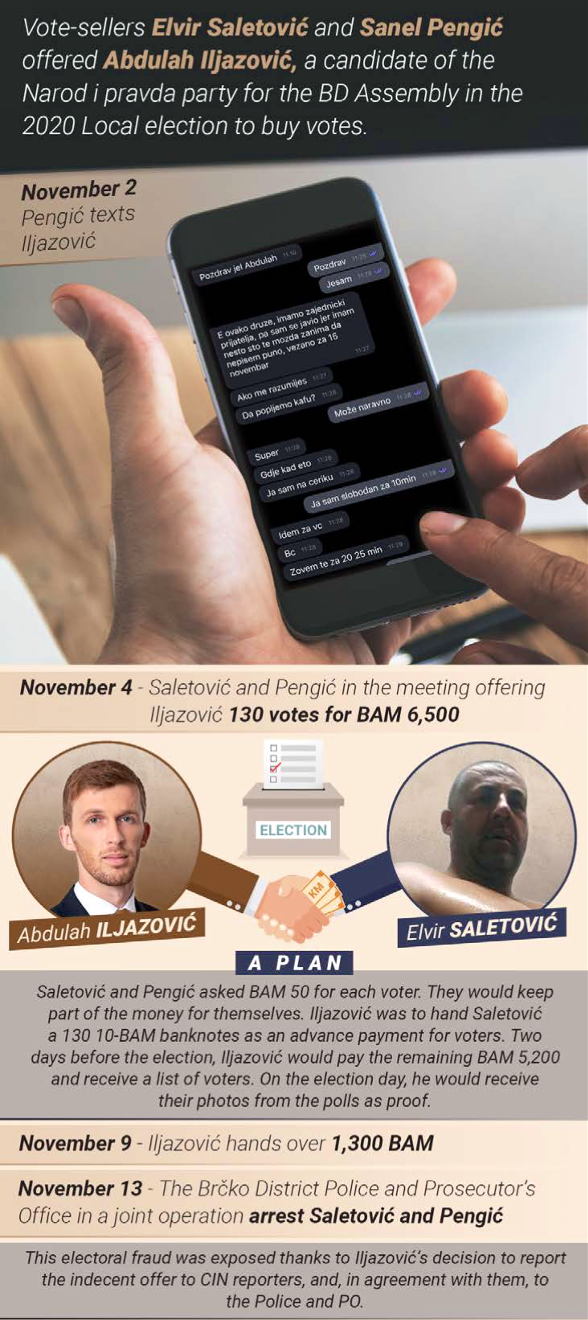
“Shortly after the postal voters’ list for the 2020 Local elections was published, the citizens of the Brčko District started coming to the Institution, claiming that they were put on that list against their will,” said the president of the Election Commission in Brčko, Andrea Mrkonjić.
When the arrests began in early October 2020, other deceived citizens were calling in Brčko District Election Commission. More than 20 of them suspected that their names were on the ballots in Croatia and Serbia.
CIN reporters revealed that three deputies and one candidate were involved in the fraud. Radoslav Bogičević and Nenad Kojić, deputies of Narodni demokratski pokret [People’s Democratic Movement], and their party colleague and candidate, Stojan Bavarčić misused 114 personal documents of their fellow citizens, neighbors, and family members. They collected documents through third parties, in return promising them jobs.
In the village of Potočari, in front of a beautiful three-story building with a large garden, reporters met Kojić’s father-in-law.
„Nothing criminal about that, they are not criminals. They are honest people since they were born. But I do not know why they did it. They have always had votes from these people. (…) To go to jail now, after so many years,” said Ratomir Gajić trying to justify the actions of his son-in-law.
Petar Bogićević, a 30-year-old and disabled cousin of Radoslav Bogićević was promised a job in the Public Utility Company “Putevi” if he would provide Radoslav with a certain number of votes. Not knowing of the fraud plotted by his cousin, Petar collected documents from his immediate family members, relatives, and friends, thinking it would be enough to vote for the NDP and Bogićević. He did not know that these data would end up at a polling station outside BiH and that Radoslav Bogićević would be detained for three months.
On the day the lists were published, Petar was called by friends and family members, convinced that he had deliberately deceived them. He refused to stand in front of CIN cameras because he says, he fears for his safety. Unemployed and unprotected, with no possibility to stand up against fraudsters in power.
Peter’s mother Joka could not have imagined that a cousin could take advantage of her son in this way.
“Why my child and my family,” said Joka Bogićević through her tears. “Radoslav Bogićević is the first cousin of my late father-in-law, what else to tell you. He tricked him and tricked us all. His best buddies, friends gave him their ID cards. They did it for Petar, to get him a job.”
A deceived village
No one from the leadership of the Brčko NDP could talk to CIN reporters because the president of the Board, Bogićević, and vice president Kojić and Bavarčić, are all in custody. The Brčko District Prosecutor’s Office holds them suspect of forging documents, plotting election fraud, and accepting bribes.
The Chief Prosecutor, Zekerija Mujkanović told CIN that they wanted to stop further election fraud with these operations.
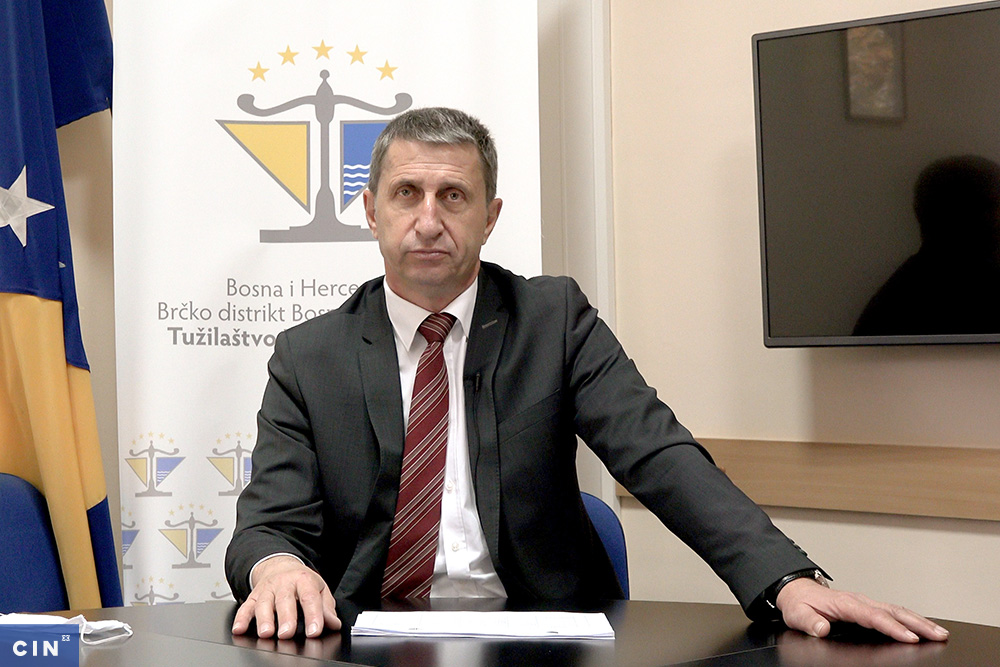
According to Zekerija Mujkanović, Chief Prosecutor of the Brčko District Prosecutor’s Office, the investigation against the deputies and other persons suspected of election fraud is to deter vote-buying in the next election
Photo: CIN
This year, 5,180 Brčko citizens registered to vote outside BiH. Four years earlier, there were half as many registered. This number of voters is enough to elect four out of the 31 deputies.
“It means four parliamentary mandates that can, of course, swing the government later, in one way or another,” said the president of Partija demokratskog progresa [Party of Democratic Progress], Mr. Siniša Golić.
Ujedinjena Srpska candidate, Neven Popić, found his name on the voting list from Serbia. He immediately addressed the Brčko District Election Commission with a deletion request.
“If such an anomaly had been noticed anywhere else – we are not talking about BiH – there would have been no election and everyone would have been arrested,” says the head of the Brčko Board of Ujedinjena Srpska [the United Srpska], Uroš Vojnović.
The climate disgrace of Visp
An inconspicuous cuboid, the size of an apartment block. The cube is situated in Visp, a few metres from the Rhone, and belongs to the chemical company Lonza. It houses the most climate-damaging factory in Switzerland.
D29 is the name of the building in the Lonza factory plan. The factory produces two things: the food additive niacin; and nitrous oxide (laughing gas) as a waste product. 1800 tons of this escape from D29 every year.
Nitrous oxide is odourless – and it is not toxic. It contributes, however, more to global warming than many other greenhouse gases. Nitrous oxide is about twelve times more harmful to the climate than methane and about three hundred times more harmful than CO2.
The nitrous oxide from D29 has a greenhouse effect of about 550,000 to 600,000 tons of CO2 per year. It accounts for over one percent of Switzerland’s total climate gas emissions. An incredibly high proportion for a single factory.
D29 emits as much greenhouse gas per year as all the traffic in Switzerland during fourteen days. Or as much as eight passenger planes in permanent flight. Or as much as the city of Lucerne with all its households, all its traffic, industry and agriculture.
Nitrous oxide does not only accelerate climate change. As it decomposes in the stratosphere, it attacks the ozone layer. Of all the gases released by humans, nitrous oxide is the biggest ozone killer today.
One thing, above all, is astonishing about the nitrous oxide escaping from the Lonza plant though: until recently, no one knew it existed.
On 10 February this year, the Federal Office for the Environment sent out a media release: “Greenhouse gas emissions of the Swiss industrial sector higher than assumed”. The industry emits around 600,000 tons of CO2 equivalents more per year than previously known. The cause is a nitrous oxide source from the production of Lonza AG in Visp. The company detected the nitrous oxide in spring 2018 and subsequently reported it. The Federal Office for the Environment assumes that the nitrous oxide has been escaping from D29 for almost fifty years.
The news was briefly covered in the media. “Swiss climate balance worse than believed”, headlined the Tamedia portals. “Correction of the climate balance”, reported SRF. Then it went quiet around D29.
How is that possible? How is it possible that a global leader in the chemical industry, which presents itself as a trailblazer of a green industry, does not notice for years that thousands of tons of greenhouse gas are rising into the sky from its factory? That the environmental authorities in Valais also overlook the nitrous oxide, even though they monitor the exhaust gases in the Lonza plants? That even at the federal level no one takes notice for a long time, despite ever stricter environmental and climate laws?
Above all, how is it possible that after the problem became known, no one acted and stopped the emissions quickly?
Over the past seven months, I have tried to answer these questions. I have spoken to more than two dozen experts in organic chemistry, climate physics, environmental protection, and environmental law. I have interviewed former employees of D29. I have studied chemical literature and, based on the Public Disclosure Act, inspected internal Lonza and federal documents.
The research shows how Lonza and the Federal Office for the Environment dragged the problem out. How Lonza hid the nitrous oxide emissions from the public and shareholders for almost two years. How Lonza refused to bear the costs of neutralising the nitrous oxide itself. And how the federal government stroke a deal with Lonza that was extremely favourable for the company – a deal at the expense of the climate.
The wonderful vitamin from Visp
Autumn 1971
This story begins in autumn 1971 with the opening of the D29 factory, at that time known as the Niazol building. It is a milestone for Lonza. Since the 1950s, the company in Upper Valais has been producing synthetic niacin, a food additive that stimulates the metabolism and is also known as nicotinic acid or vitamin B3. Many people take artificial niacin every day, for example as a component of a vitamin preparation or in cereals.
With the production capacities of D29, Lonza became the world market leader for niacin all at once in 1971. The corporation has remained so to this day. In Visp and in Nansha in southern China, it produces around 35,000 tons of the powder annually, achieving an estimated 300 million dollars in sales per year. Niacin is one of the most commercially important substances in Lonza’s history. A wonderful vitamin from Visp.
Lonza has steadily refined niacin production. The researchers are especially proud of their ecological advances: In 2000, for example, a Lonza engineer described a new oxidation process in a technical article. It was more efficient in terms of CO2 emissions, heat, and waste products. “This process shows how serious Lonza is about combining economic and ecological principles in its process management”, the report stated.
Five years later, a Lonza scientist spoke about sustainability at a symposium of the Swiss Chemical Society. Niacin production had been “further developed and optimised over more than fifty years to the present day in terms of economic efficiency, product quality and ecology”, the script reads.
Lonza also presented itself internationally as a pioneering company in sustainable niacin production. In a teaching material on “Green Chemistry”, a Lonza researcher wrote in 2011: The key to environmentally friendly chemistry is “that there needs to be an awareness of all aspects of the process”.
And suddenly there is nitrous oxide
26 April 2017
Then came 26 April 2017. On that day, Lonza carried out a routine check for toxic nitrogen oxides in D29. The results made the technicians wonder. The measuring device showed a nitrogen oxide concentration that was twice as high as usual. The technicians had only one explanation for the enormous deviation: they had used a new measuring method. Upon closer examination, they found nitrous oxide (laughing gas) in rough quantities.
Why did Lonza only discover the nitrous oxide in 2017? And why did the environmental authorities of the canton of Valais and the federal government not notice it either? The answer is relatively simple: Lonza did not need to see the nitrous oxide. The others couldn‘t see it. In a way, nitrous oxide is a blind spot in Switzerland’s environmental law.
A substantial part of our environmental legislation dates to the 1980s. At that time, politics was not primarily concerned with the climate, but with protecting people, animals, and local habitats from toxic substances. As nitrous oxide is not directly toxic, it remained unregulated.
Nothing has changed in this regard until today. Although Switzerland has committed itself to reducing greenhouse gas emissions by signing the Kyoto Protocol, there are neither limits nor control obligations for nitrous oxide.
Former employees of D29 told “Das Magazin” that they had been aware that nitrous oxide was produced during niacin production, but that they had assumed very small amounts. The assumption was never checked, as nitrous oxide is non-toxic. Lonza’s official justification is very similar: nitrous oxide emissions are harmless to health and are not regulated in the Air Pollution Control Act, the company wrote in a media release in February 2020. Therefore, “no investigations into nitrous oxide were carried out in the context of niacin production”.
For the same reason, the Valais environmental authorities overlooked the gas too. The cantonal environmental office only checks industrial plants for those substances that are regulated in the Air Pollution Control Act. Nitrous oxide is not one of them.
What about the federal government? It does maintain measuring stations in Davos and on the Jungfraujoch that could have registered the nitrous oxide from D29, but there, too, nothing was detected. Experts suspect that the mountain peaks in the Upper Valais shielded the released gas from the measuring stations.
So D29 kept on producing. Niacin. And nitrous oxide.
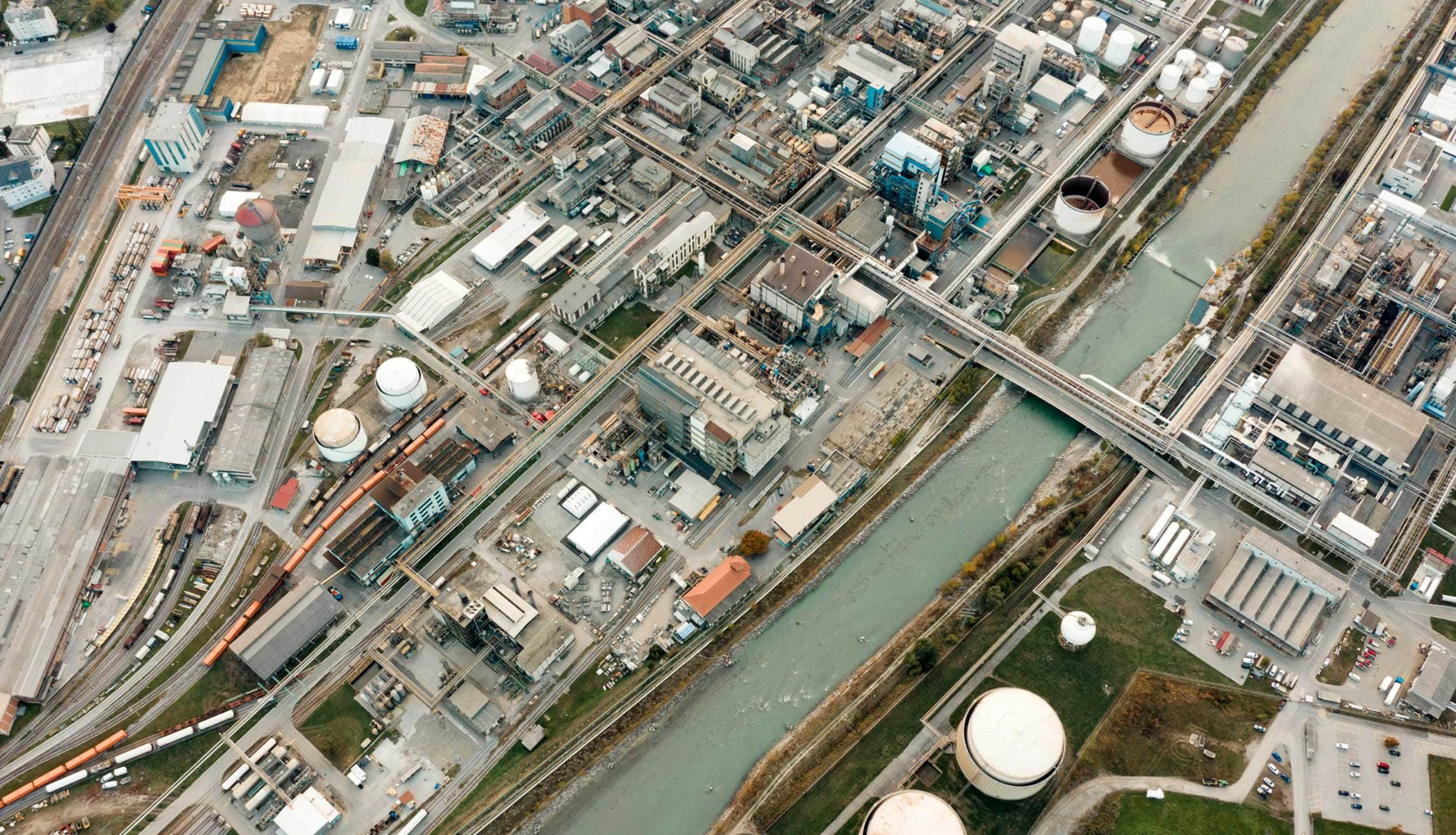
The most climate damaging factory in Switzerland: Factory D29 emits 1,800 tons of nitrous oxide every year.
Photo: Fabian Hugo
The solution: a catalyst
Spring 2018
After the first measurements in April 2017, Lonza failed to inform the authorities. Instead, it examined the exhaust gases from D29 itself and commissioned an external company to carry out a measurement. This took place on 10 April 2018. Almost a year had passed since the first indications of nitrous oxide.
Although nitrous oxide is a much more potent greenhouse gas than CO2, it plays only a minor role in the public climate debate. The main reason: nitrous oxide is less significant in terms of quantity than CO2 and methane. In addition, climate policy starts where emissions can be easily reduced. A large part of man-made nitrous oxide does not fall into this category. It is produced in agriculture when nitrogen fertilisers are used. The gas rises from the soil and can hardly be captured.
The situation is different when nitrous oxide is produced in concentrated form, for example in the industrial sector. Catalysts can neutralise the gas almost completely. They convert the extremely climate-damaging nitrous oxide (N2O) into nitrogen (N2) and oxygen (O2). Nitrous oxide becomes air.
Lonza is familiar with these catalysts. After the discovery of the emissions in D29, the company is planning to install a model from ThyssenKrupp in spring 2018. This could reduce emissions by more than 98 per cent, according to an internal document. Instead of 5 tons of nitrous oxide per day, D29 would then only emit around 75 kilograms.
The catalyst could be effective from the third quarter of 2019, writes Lonza in 2018. The costs amount to CHF 12 million, a manageable sum for a corporation with an annual turnover of 6 billion. Nevertheless, until today there is no sign of a catalytic converter in Visp. The reason: Lonza did not want to pay for the installation itself.
Lonza informs the federal government – and wants money
25 May 2018
On 25 May 2018, a Lonza delegation enters the headquarters of the Federal Office for the Environment in the Bernese suburb of Ittigen. The company representatives have prepared themselves well. For Lonza, it’s not just about 12 million Swiss francs, but much more money.
To lighten the mood, the Lonza representatives open the meeting with good news – a small emission reduction at the petrol cracking plant in Visp. Then they move on to D29. Here, too, Lonza emphasises the positive aspects. With a catalyst, nitrous oxide emissions from the niacin process could be greatly reduced, the meeting report says. “Lonza is planning to install a catalytic converter.”
The company representatives set only one condition: The construction of this plant must be recognised by the federal government as a CO2 offset project. Without the proceeds from the sale of CO2 certificates, the project is “not cost-efficient and will therefore not be implemented”. Thus, the company wants to be paid to stop polluting the climate. Otherwise D29 will simply continue to run.
In principle, this is nothing unusual. Much of Switzerland’s climate strategy is based on the idea that financial incentives can encourage businesses, households, and citizens to reduce their greenhouse gas emissions.
The so-called carbon offset projects also work according to this principle. Those who reduce emissions with voluntary measures can sell the CO2 savings to a foundation of the Swiss mineral oil industry. The foundation paid an average of CHF 95 per ton of CO2 reduction in 2019.
Often the investment costs are not fully covered by this contribution. Sometimes, however, the polluter of the emission even makes a profit. This was also the case with D29. Given that the plant emits so much greenhouse gas and the price of a catalytic converter is comparatively low, tens of millions of francs in profit would be in store for Lonza from selling its climate damage.
However, there was one problem: Lonza is one of the companies with the highest greenhouse gas emissions in Switzerland and, according to the CO2 Act, is not eligible for carbon offset projects at all. For companies like Lonza, a stricter set of rules applies, the so-called emissions trading system.
This system works as follows: Every year, the federal government distributes a certain number of free emission certificates to the participating companies. These certificates entitle the companies to emit greenhouse gases. At the end of the year, the accounts will be balanced. For every ton of greenhouse gas which was effectively emitted, the company must submit an emission certificate. If a company does not have enough certificates, it must buy the missing ones.
As the federal government reduces the number of free certificates issued by around two percent each year, an incentive system is created: if companies do nothing to improve their climate efficiency, they must buy more and more certificates. If, on the other hand, a company manages to reduce its emissions, it can sell the remaining free certificates of the federal government or save them for later.
Carbon offset project or emissions trading? In May 2018, this is a multimillion-franc question for Lonza. Either the company receives money from the petroleum industry’s pot to get rid of the nitrous oxide problem – or it has to fund the catalytic converter itself and also acquire emission certificates for the nitrous oxide that is escaping from D29 until the catalytic converter is installed.
In the negotiations with the federal government from May 2018 until autumn 2019, Lonza insists on being allowed to implement the catalytic converter as a carbon offset project – despite legal objections. This is a crucial reason why the nitrous oxide catalyst is still not operating.
Practically nothing happens at the federal level
Summer 2018
Another reason can be found in Ittigen, at the Federal Office for the Environment. How does an environmental authority react to the news that a huge and easily avoidable source of greenhouse gas has been discovered in its area of responsibility? One would think with immediate measures.
The opposite is the case at the Federal Office for the Environment. After 25 May 2018, the day Lonza had informed the authorities about the nitrous oxide problem, not a lot was happening. The company indeed submits an eight-page project outline for the construction of the catalytic converter as a carbon offset project as early as mid-June – but when Lonza asks about the state of affairs at the Federal Office in July, an official writes back: “Unfortunately, I can’t give you a firm date for the response.” Colleagues were “absent for holidays” until the end of July.

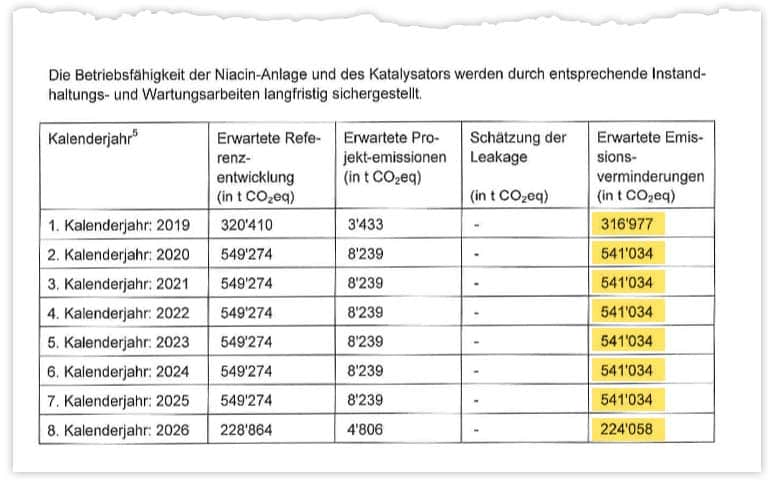
A project outline by Lonza shows that the corporation wanted to install the nitrous oxide catalyst as early as 2019. The emission of more than one million tons of CO2 equivalents in 2020 and 2021 could thus have been avoided compared to the current planning status.
When the office finally replies on 22 August 2018, it is only a “voluntary preliminary assessment”. The Federal Office for the Environment points Lonza towards the legal situation, according to which companies that are subject to the emissions trading system are not eligible for carbon offset projects. In addition, there were ambiguities in the project outline.
A few days later, Lonza asks how the ambiguities can be resolved. Again, it takes four weeks for the Federal Office to reply: It still needs to be clarified where exactly in the niacin production process the nitrous oxide is produced.
On 1 October 2018, the Federal Office for the Environment decides to have the issue clarified externally. The report arrives five months later, in March 2019, and states that the nitrous oxide is produced during niacin synthesis. This is exactly what Lonza told the federal government about nine months earlier.
There is an additional delay because the environmental authority had commissioned a second expert assessment in the meantime. It wants to know from an institute in Germany how the EU would integrate Lonza’s niacin plant into its emissions trading scheme. The short version: “There is no comparable plant in the EU.” When the report arrives, it is June 2019.
The catalytic converter is still blocked
June 2019
More than a year has now passed since the Federal Office for the Environment learned about the nitrous oxide problem in D29. In the meantime, Federal Councillor Simonetta Sommaruga of the Social Democratic Party has taken over the Environment Department in Bern and insistently called for more climate protection. A few floors down, however, the Lonza case is gathering dust.
There is deadlock over the installation of the catalytic converter. The conflict in mid-2019 is still the same as in May 2018: Lonza wants money from the pot for carbon offset projects. The Federal Office for the Environment is still brooding over the question whether this is permissible. Meanwhile, D29 just keeps on running. 5 tons of nitrous oxide per day. The equivalent of 1500 tons of CO2.
Lonza’s company history is rich in environmental scandals. Recently, however, the company has been making efforts to polish up its image. A key event was the election of Albert M. Baehny as president of Lonza. Under Baehny, the company commits to the UN climate change action in 2018. Under Baehny, a comprehensive sustainability report is produced for the first time. Under Baehny, Lonza even creates its own “Sustainability Council”. This council reports directly to the Executive Committee and it’s sole task is to strengthen the idea of sustainability throughout the corporation.
The green course remains explicitly a matter for the boss. “The ultimate responsibility for all sustainability issues lies with the Chairman of the Board of Directors,” writes Lonza at the beginning of 2019, hence with Albert M. Baehny. Baehny summarises the company’s values as follows: “We measure our success not only by sales and profits, but also by how much we can give back to our people and communities and contribute to the protection of the environment.”
In the negotiations with the federal government, however, environmental protection is not a priority for Lonza. The decisive factor is not having to pay for the installation of the catalytic converter.
The bazaar around D29 begins
26 July 2019
On 26 July 2019, just over a year after the first meeting, a delegation from Lonza arrives in Ittigen again at 8.30 am. Now the company representatives learn that a carbon offset project is definitely not possible. The objections of the legal department of the Federal Office for the Environment are too strong.
Instead, the federal government is making an offer: Lonza will pay for the catalytic converter itself but will be released from the obligation to buy emission certificates for the nitrous oxide for 2018. For 2019 and 2020, the company will further receive free emission certificates from a federal reserve. However, because the reserve is not sufficient, Lonza would have to buy additional certificates. Simonetta Sommaruga, according to the minutes, will be informed about the decision.
The offer of the environmental officials illustrates a special mixture of fantasy and formalism: According to the minutes of the meeting, the office argues that nitrous oxide was only proven by the external expert assessment of March 2019. “Legally, therefore, these are new emissions.” Therefore, Lonza mustn’t submit certificates for the period before the report. Thousands of tons of nitrous oxide – simply deleted.
Lonza does not even accept this generous offer though. On 13 August, the company complains about the “major financial impact” and asks for a transitional arrangement for the years 2019 and 2020, because it can only expect nitrous oxide emissions to be adequately considered in the distribution of the free certificates from 2021 onwards.
And Bern caves in again
4 September 2019
On 4 September, the federal government makes another compromise: Lonza does not have to submit emission certificates for 2019 either, saving up to CHF 10 million. But even that is not enough for the corporation. The legal department is increasing the pressure on the federal office, and Lonza is playing its strongest card: the 3,000 jobs in Visp. “We do not want to endanger the environment or the Visp location,” it says in a letter from 16 September 2019. However, if emission certificates for 12 million francs must be bought for 2020, “a relocation of niacin production to China is also being considered, which would threaten jobs in Visp. A relocation would weaken the industrial location as a whole, even threaten it.”
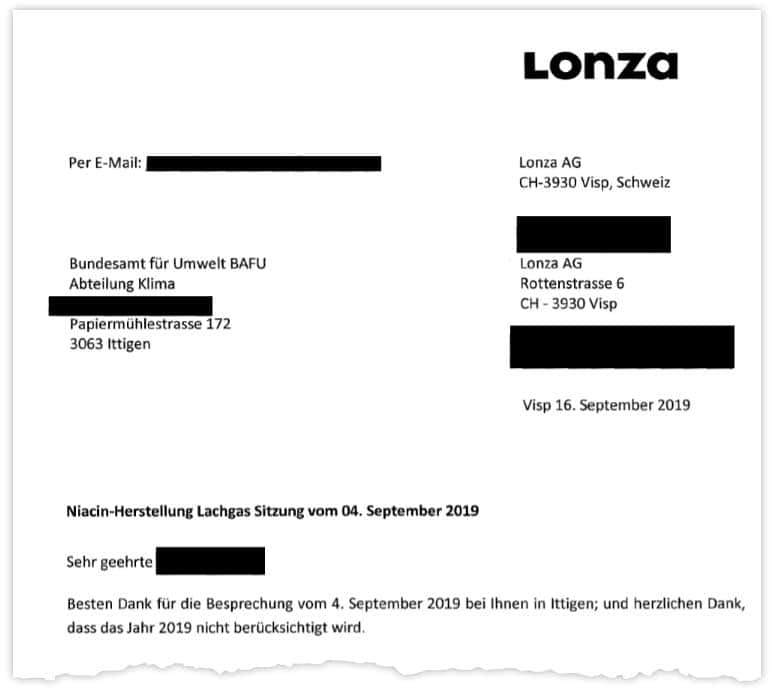

“Visp location threatened”: Lonza fought with no holds barred for the Federal Office for the Environment to concede.
The threat works. On 13 November 2019, the two parties agree that Lonza will not have to buy any emission rights on the stock exchange for the 1800 tons of nitrous oxide in 2020. Instead, the group receives free emission rights from the federal government, part of them as an advance for 2021. In return, Lonza commits to “put the combined catalytic converter into operation by the end of 2021 at the latest”.
In other words: D29 may continue to run for two years. The Federal Office for the Environment is thus condoning additional emissions of 1.2 million tons of CO2 equivalents.
The federal office and the question of cost
September 2020
Why didn’t the office act more quickly? Why didn’t it push for a quick solution? Andrea Burkhardt, the head of climate at the Federal Office for the Environment, sits in a cramped meeting room at the agency’s headquarters at the end of September 2020. She is defending herself against the accusation that she has dragged out the nitrous oxide problem. It is true that the two expert reports took a lot of time, Burkhardt says. But firstly, it had to be established beyond doubt where the nitrous oxide is produced in the niacin production process. “That was a prerequisite for submitting the emissions to the emissions trading system.”
Secondly, the federal government had to protect itself in case the dispute with Lonza ended up in court. “Then it would have probably taken much longer for the catalytic converter to be activated.”
But why didn’t the authorities put more pressure on the company? “We checked whether we could oblige Lonza to install the catalytic converter immediately,” says Burkhardt. “But there is no legal basis for this because nitrous oxide is not regulated in the Air Pollution Control Act.” To find a quick solution anyway, she says, Lonza was waived the emission rights for 2018 and 2019. “It wouldn’t have done anyone any good if Lonza had bought them on the market. It would have only occasioned costs,” says Burkhardt.
The fact that these costs would have been a means of motivating Lonza to build the catalytic converter quickly too is ignored at the Federal Office for the Environment.
How Lonza and the Federal Government hid the nitrous oxide
2018 until 2020
There is probably another reason why the nitrous oxide problem in Visp was not tackled more firmly: The public, the environmental associations, the Parliament, even the shareholders of Lonza, all those who could have exerted pressure, were kept in the dark all this time.
Although Lonza already knew in spring 2018 how much nitrous oxide escapes from D29, the emissions were concealed for almost two years. In March 2019, the corporation presented shareholders with incorrect figures on the company’s greenhouse gas emissions – the nitrous oxide was simply omitted. The effect is remarkable: The actual direct emissions were around twice as high as those reported by Lonza in the 2018 annual and sustainability report.
In the new sustainability report published this year, Lonza writes that nitrous oxide emissions were only “quantified in 2019”. However, documents obtained by “Das Magazin” show that this is not true. The measurements already took place in 2018.
Incorrect information in annual reports can weaken shareholder confidence and force institutional investors to take action. The Lonza share is an important position in many sustainability funds of Swiss banks (e.g. UBS, Raiffeisen, Vontobel, Basler Kantonalbank). Some of these sustainability funds made significant additional purchases of Lonza shares in the year of the misreported issue figures. These funds could come under pressure from investors now.
Even the Federal Office for the Environment helped with the concealment: Large industrial companies are obliged to enter their pollution rate in the Swiss pollutant register. Although Lonza informed the authorities in May 2018 about the emission of around 1800 tons of nitrous oxide per year, the company only had 25 tons entered in the register that year.
The Federal Office for the Environment, which is responsible for enforcing the compulsory reporting, had tolerated this: At the time, the quantity had not yet been proven beyond doubt, the office explains.
Even more delay for the catalytic converter
October 2020
What does Lonza President Albert M. Baehny say about the most climate-damaging factory in Switzerland though? Why did the corporation conceal the emissions from D29? Why didn’t Lonza speed up the construction of the catalytic converter? And how does all of this fit in with the company’s commitment to environmental and climate protection?
I would have liked to address these questions personally to Albert M. Baehny – but the press office told me that it was not possible to talk to the Lonza Chairman. Instead, the company sent a written statement from Baehny.
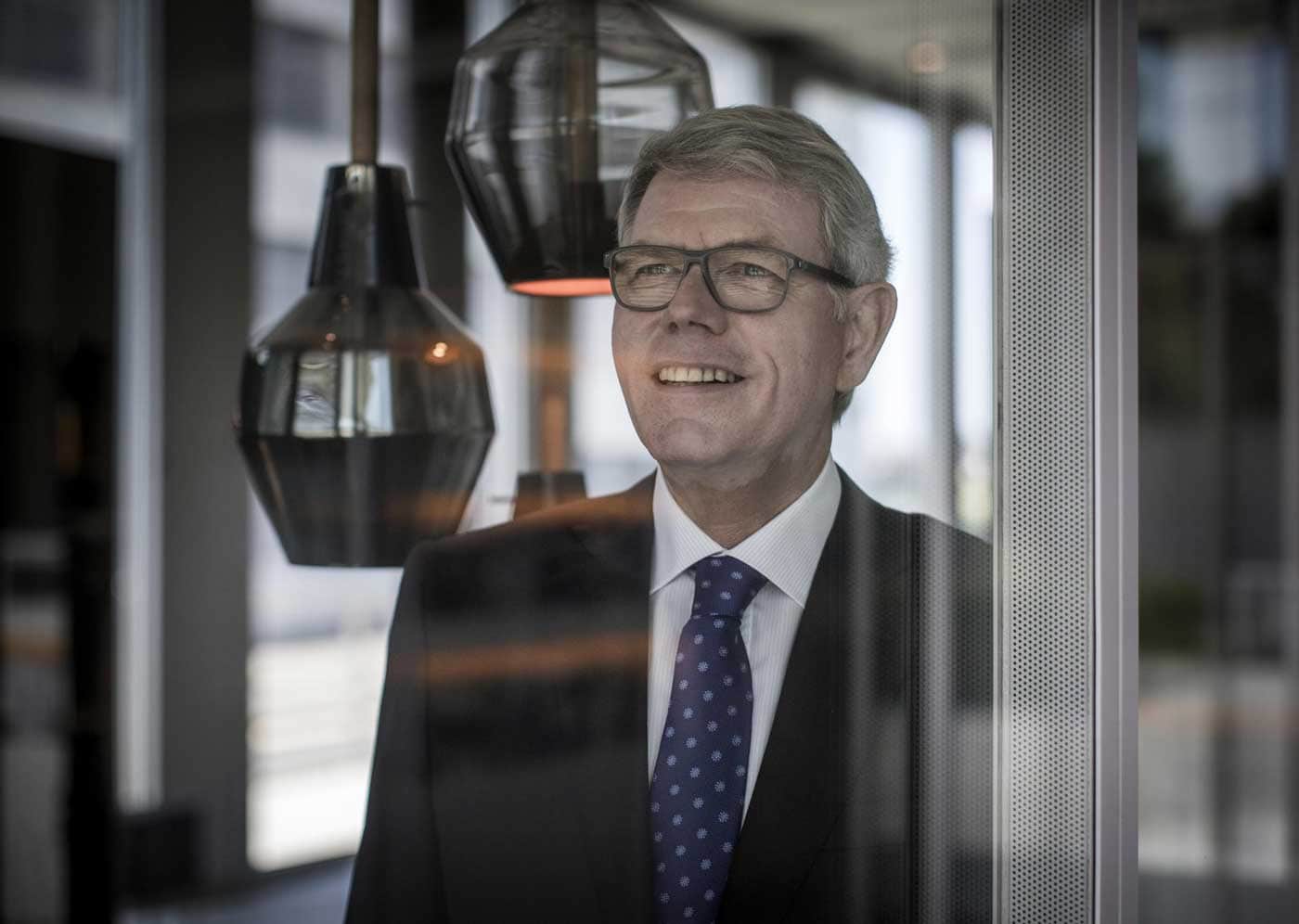
Lonza President Albert M. Baehny said that his group was working “at full speed” on the technically sophisticated catalyst solution.
Photo: Kostas Maros (Bilanz)
According to Baehny, Lonza did not make any mistakes, neither before 2017 nor afterwards. The letter does not even express any regret that so much time has passed before the catalytic converter is installed. Rather, it states that it’s only thanks to Lonza that the emissions from D29 are known at all today: “I remind you of the fact that it was Lonza that became aware of the nitrous oxide issue and that it was Lonza that made the issue transparent to the federal government and the public.” In addition, he said, the company strives to minimise emissions “even if there are no regulatory limits to comply with”.
He does not want the fact that Lonza had presented the prospect of relocating niacin production to China to be understood as a threat. For such projects, it is “quite usual to examine various options”. Lonza was not responsible for the fact that the implementation of the catalyst has been delayed for years. The company had worked “at full speed” on the demanding technical solution. A building permit had to be obtained too. The plans for commissioning in the third quarter of 2019 “proved to be too optimistic”.
The announcement in February 2020 that the catalyst would be ready by August 2021 was also too optimistic. Lonza will not meet the deadline of the end of 2021 that was agreed upon with the federal government. Implementing the catalyst is now planned for the first quarter of 2022. But not even that is certain: According to the Lonza press office, the “caveat” of met deadlines by the suppliers applies.
Thus, almost five years will have passed from the first indications of nitrous oxide to its neutralisation. Almost 9000 tons of nitrous oxide have been produced by D29 during this time. The equivalent of 2.7 million tons of CO2. And all because of a tiny loophole in the law, a sluggish environmental authority and a company that did not want to pay for the catalytic converter neutralizing the climate gas it has been producing.

